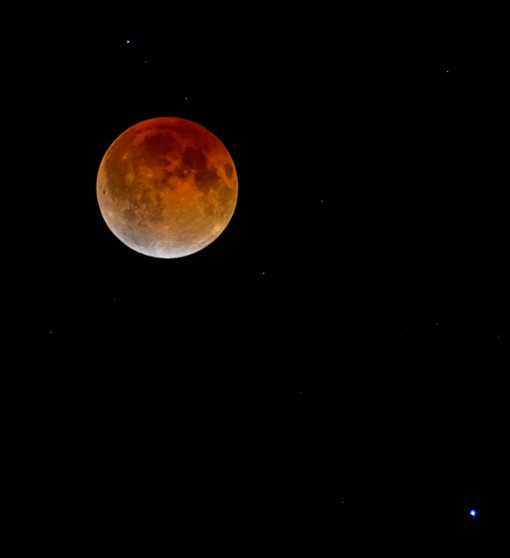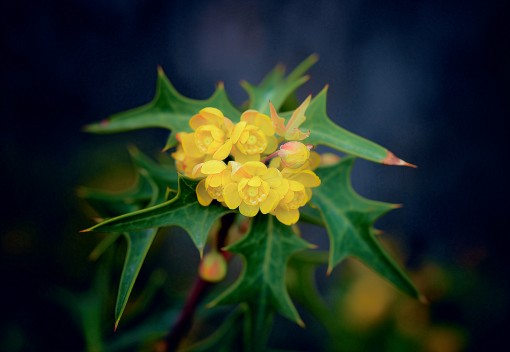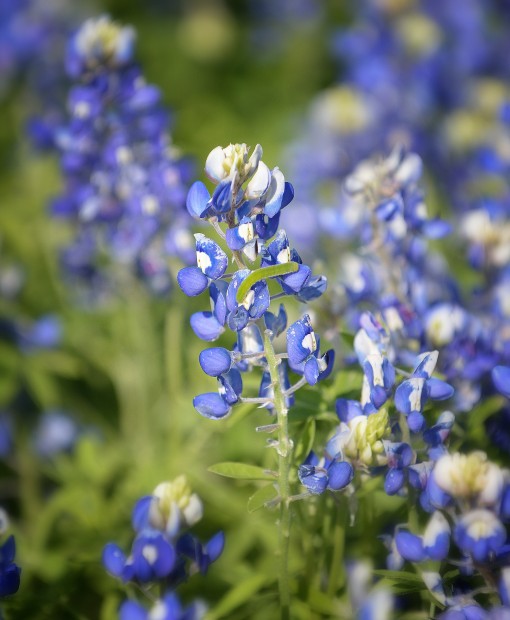Blood Moon and Life Renewed
April 18, 2014 | By Shoal Creek Conservancy
This blog post was written by Ted Lee Eubanks. To learn more about the author, please visit this site.

And I will grant wonders in the sky above and signs on the earth below, blood, and fire, and vapor of smoke. The sun will be turned into darkness and the moon into blood before the great and glorious day of the Lord shall come…Acts 2:20
The Tonkawa nestle into their Shoal Creek encampment for an untroubled night. Spring hangs heavy in the air. Each shift in the breeze delivers another pleasant scent – Texas mountain laurel, agarita, and prairie rose. Prairies are beginning to green, and patches of bluebonnets provide a pleasing accent to the monotonous grasslands.
A young brave stirs in the early morning hours. He notices the full moon beginning to darken as he peers over one of the massive live oaks bordering the creek. This dark shroud turns to copper-red as the morning progresses. He alerts the tribe to this ominous transformation. No one can explain the blood moon. Most agree that this sign is forbidding.
A blood-red moon would scare the bejesus out of any person in antiquity, including our Tonkawa. Most cultures have myths related to lunar eclipses. Egyptians thought that a sow swallowed the moon for a short time. Many cultures have viewed the eclipse as being the moon being swallowed by other animals, such as a jaguar in Mayan tradition. In the Book of Acts, Peter lists the turning of the “moon into blood” as a sign of the return of the Lord.
Eclipse science is straightforward, and admittedly unimaginative when compared to the myths. A lunar eclipse occurs when the Moon passes directly behind the Earth into its shadow (umbra). The sunlight traveling through the Earth’s atmosphere casts the moon in a earth-toned light. The moon returns to normal once it escapes the Earth’s shadow.

But what must have the original Shoal Creek inhabitants thought of this inexplicable change? Did they fear the wrath of their gods? Or did they see the blood moon as the sign of a prosperous hunting season soon to arrive?
We will never know. These original Shoal Creek residents are gone, and their religion and myths have disappeared with them. We still find their arrowheads and pottery shards, but their voices are stilled. We are left as witnesses.
I stumbled out of bed a few nights ago to see the eclipse. The viewing conditions could not have been better. I watched, as the young brave must have watched, as the moon gradually morphed from white to red, from bone to blood.
Shoal Creek’s prairies, now mostly mowed turf grass, are currently accented by bluebonnets and other wildflowers. The return of color to the blanched winter landscape must have been a reassuring sight to the Tonkawa. Spring is the resurrection, the return of life. The red-eared sliders and common snapping turtles come out of hibernation. Yellow-bellied water snakes return to the creek to prey on minnows, and the great blue herons stalk the shallow waters of the creek to prey on water snakes.
I am confident that we share the same emotions with the Tonkawa at this time of year. Winter is gone. Life has returned.
Shoal Creek has borne witness to this seasonal change since the beginning of man’s presence here. Let her continue.

